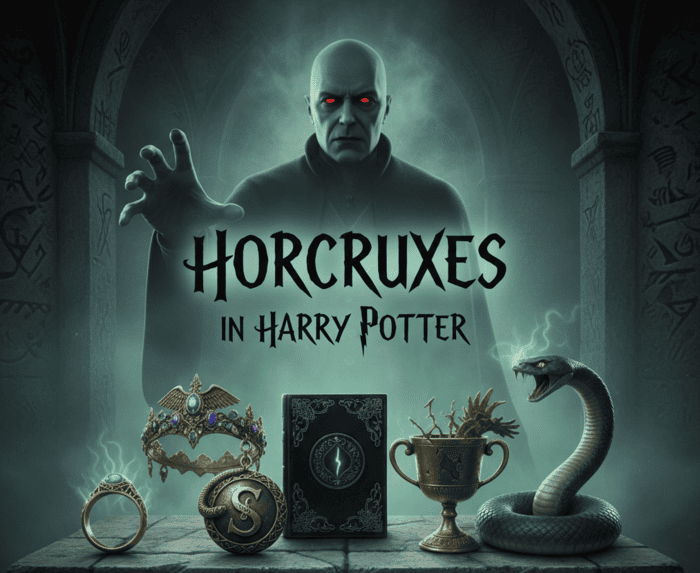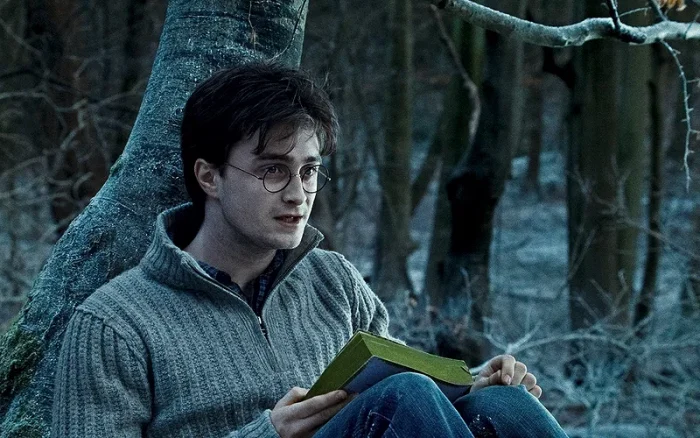Among all the magic in Harry Potter, nothing is quite as chilling as the Horcrux. It’s not a clever spell or a rare potion — it’s the act of tearing your own soul apart to dodge death. Voldemort’s obsession with them changes the whole story. What starts as a school adventure about friendship becomes a fight against a wizard who has made himself almost unkillable. To understand the Horcrux is to understand why Voldemort feared death so much, and why Harry’s willingness to face it gave him the strength to win.
Where Horcruxes Came From
The idea of the Horcrux isn’t new to Voldemort. Long before his time, a Dark wizard from Ancient Greece — Herpo the Foul — was the first to work it out. He was the kind of figure who pops up in wizarding history books as a warning: a Parselmouth who also bred the first Basilisk. Herpo managed to split his soul once, and that alone was enough to secure his reputation for centuries.
What makes a Horcrux different from any other Dark spell is the price it demands. To create one, a witch or wizard has to kill deliberately, then use a secret piece of magic to bind part of their soul to an object. It isn’t just violence; it’s a violation of the natural order. Most wizards won’t even speak about it. Dumbledore cleared every mention of the spell from Hogwarts’ library, leaving only hints in books like Magick Moste Evile.
For Voldemort, though, this wasn’t a limit — it was a challenge. He set out not just to copy Herpo, but to surpass him, splitting his soul again and again. That ambition shaped the final act of the saga.

Voldemort’s Seven Horcruxes
Voldemort wanted his soul in seven pieces — six hidden away and one left inside his own body. Seven is a “magical number”, but it was also about pride. Each object he chose meant something to him:
- Tom Riddle’s Diary – his first experiment, planted back at Hogwarts to prove he could control the school even as a memory. Destroyed by Harry with a Basilisk fang.
- Marvolo Gaunt’s Ring – a family heirloom tied to his Slytherin bloodline. Hidden in the Gaunt shack, later destroyed by Dumbledore with the Sword of Gryffindor.
- Slytherin’s Locket – stolen from a collector, sealed in a sea cave full of Inferi. Eventually cut open by Ron with the sword.
- Hufflepuff’s Cup – taken from Hepzibah Smith and locked in Bellatrix Lestrange’s Gringotts vault. Destroyed by Hermione with another Basilisk fang.
- Ravenclaw’s Diadem – the “lost” crown, hidden in the Room of Requirement. Burned to nothing by Crabbe’s out-of-control Fiendfyre.
- Nagini the snake – his living Horcrux, always at his side, killed by Neville with the sword during the final battle.
- Harry Potter himself – created by accident the night Voldemort tried to kill him as a baby. The fragment was destroyed later by Voldemort’s own curse.
Each Horcrux was both a shield and a statement. Together they show how badly Voldemort wanted to rewrite his own story: to erase his Muggle father, to tie himself forever to Hogwarts’ founders, and to make his survival seem inevitable.
How the Horcruxes Were Destroyed
Breaking a Horcrux isn’t as simple as smashing the object. Magic keeps it alive unless it’s damaged beyond any repair. That’s why only a few things in the wizarding world can do the job:
- Basilisk venom: so toxic it burns through magic itself. Harry used a fang to stab the diary, and later Hermione used one on Hufflepuff’s Cup.
- The Sword of Gryffindor: after Harry killed the Basilisk, the sword absorbed its venom. That made it the perfect Horcrux-killer, and it destroyed the ring, the locket, and finally Nagini.
- Fiendfyre: cursed fire that eats everything in its path. Crabbe lost control of it in the Room of Requirement, but it took the diadem with it.
- The Killing Curse: in one unique case, Voldemort’s own spell hit the Horcrux inside Harry, wiping out the fragment without killing Harry himself.
The way each Horcrux fell wasn’t just practical. It mattered to the story. The sword — a symbol of courage and loyalty — was used again and again to undo Voldemort’s magic. Fiendfyre showed how Dark Arts consume their own masters. And Harry’s survival proved that self-sacrifice, not fear, was the strongest defence of all.
The Price Voldemort Paid
Voldemort thought Horcruxes made him stronger. In reality, they stripped him of everything human.
Physically, he changed beyond recognition. The charming Tom Riddle slowly gave way to a pale, snake-like figure with red eyes and slit nostrils. His body reflected what his soul had become — warped and broken.
Psychologically, the damage was worse. Every time he split his soul, he lost another piece of his humanity. Love, empathy, and remorse became impossible for him. All that was left was cruelty, paranoia, and rage. He couldn’t even sense when his Horcruxes were being destroyed. For a man who built his whole strategy on them, that blindness was fatal.
The final irony is that the magic he used to protect himself left him weaker. By scattering his soul, he made it unstable. By tying it to grand symbols of power, he made his hiding places predictable. And by cutting himself off from human feeling, he failed to understand the very force — love — that defeated him.


